To some, 2023 was one of the best years for video games in a long time. It didn’t quite land that way for me, but that’s okay. Even if I don’t rank the likes of Super Mario Bros. Wonder and Baldur’s Gate 3 among the year’s best, I still admire the impulse they exhibit to try something fresh and new, or to make the familiar bigger and better, with orders of magnitude more intricacy and complexity than it’s ever been done. 2023 was, refreshingly, a year of big swings, in which the safe and conventional were overshadowed by the daring and visionary. My own short list of personal favorites includes two of the most high-profile successes of the year, as well as a few games that look back at visionary efforts of the past, and one intimate gem that speaks to the place games occupy in the lives of those of us who love them.
Here, in order from bottom to top, are my five favorites of the year.
5. Final Fantasy (Pixel Remaster)
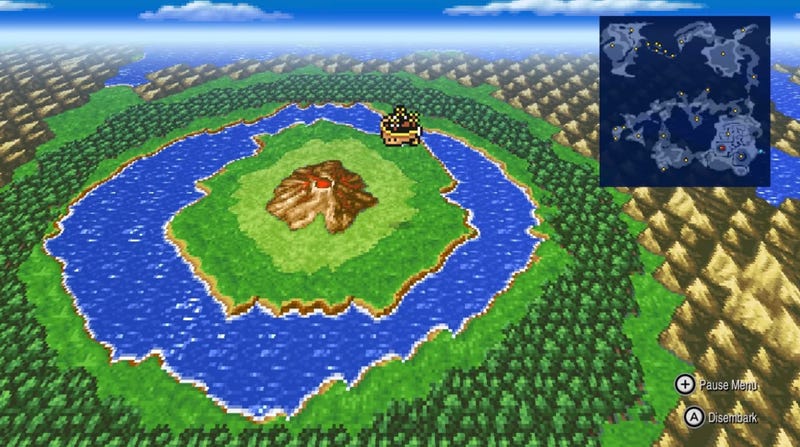
Though previously available on PC and mobile platforms, it wasn’t until this April that Square Enix’s so-called Pixel Remasters of the first six Final Fantasy games landed on PlayStation and Switch. I think VI remains the best of the early Final Fantasy games, but it was also already so excellent that it didn’t need the benefit of a remaster to reveal its greatness. I’d only ever seriously played the original Final Fantasy, however, in its original form on the NES sometime in the late ‘80s. It was undoubtedly remarkable for its time, but it’s also always been a particularly difficult game to go back to, inescapably sluggish and burdened by needless frustrations like the inability to buy more than one potion or other item from shopkeepers at a time.
Elements like this are a sticky film on the surface that can make it difficult to clearly see the magic residing in the adventure underneath. Thankfully, the Pixel Remaster of Final Fantasy wipes away all the detritus and lets this glorious role-playing game shine. Some may wonder why anyone would want to go back to the original Final Fantasy when its immediate sequels “improved” upon it, giving us more complex characters, more intricate worlds, more epic quests. But this is precisely what makes the first feel so refreshing today. There’s an archetypal purity to its structure and a breeziness to its pacing that were arguably lost as the franchise became increasingly elaborate. Revisiting it today, I developed a new admiration for the way in which its world gradually opens up, and for the ways in which its pleasantly barebones story lets us color so much in with our own imaginations. It’s a stirring adventure that brilliantly set the stage for so much of what was to come in the JRPG series, and it moves along at such a wonderfully brisk pace, you can practically feel the wind in your hair as that first iconic airship takes flight.
4. The Making of Karateka
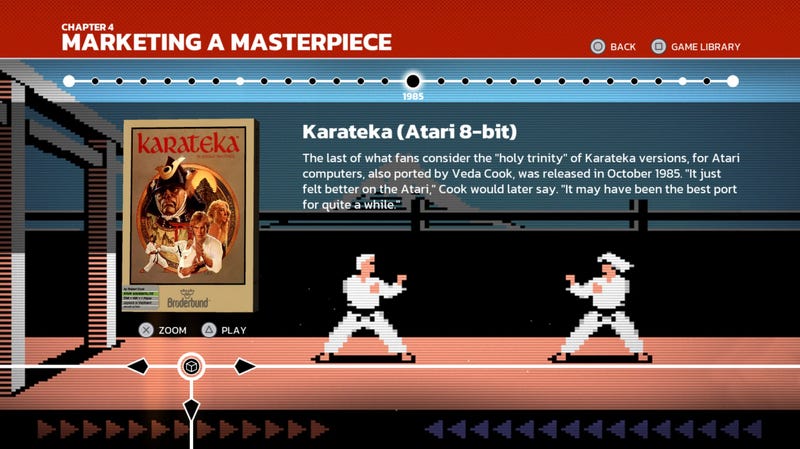
In my introduction, I said that 2023 has been a year of big swings. It’s fitting, then, that The Making of Karateka lets us look back at one of the most ambitious and successful endeavors in early gaming history, a big swing that paid off in a big way. Packed with new interviews and archival materials, Digital Eclipse’s “playable documentary” gives Prince of Persia creator Jordan Mechner’s 1984 smash Karateka the Criterion Collection treatment. Mechner’s journals from the period inform our understanding of the creative impulses that drove him to create the landmark action game, for instance, while other resources illuminate the ways in which he drew on cinema to shape its storytelling and design.
Read More: This ‘Playable Documentary’ About A 1984 Classic Is One Of The Year’s Best Games
Preserving game history is much more than a matter of just keeping raw files on computers. If we truly believe that games are an important creative medium whose history is worth saving, then it’s a matter of telling the stories around games, humanizing the artists who made them, understanding the technical limitations they were operating under and the business challenges they faced. We understand the need to do this with art forms like cinema and music, but games remain behind the curve. There’s hope, however. The Making of Karateka is billed as the first in what Digital Eclipse is calling its Gold Master series. A second is already on the way. With any luck, we’ll soon begin to see numerous publishers putting out an entire range of deep dives into classic games.
3. VIDEOVERSE
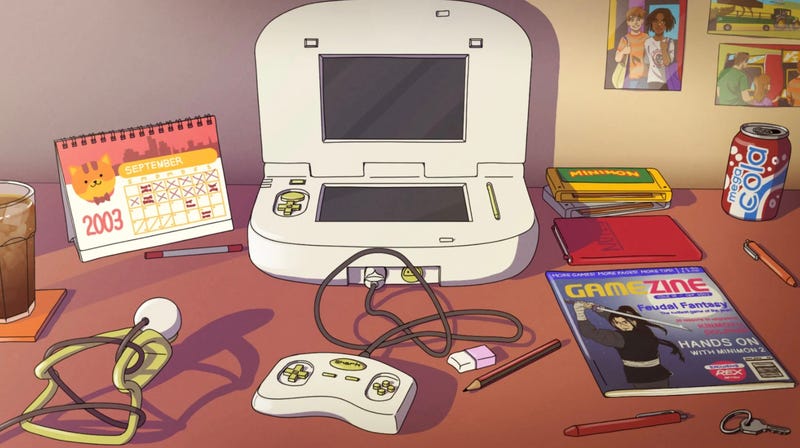
Games matter. More than just pleasant distractions, they often carve out a meaningful place in our lives. The second game from indie developer Kinmoku, Videoverse takes place in the final days of a fictional, early-2000s online gaming community, and while it’s packed with authentic and amusing details about the ads and memes of the era, what makes Videoverse special is its exploration of how games can shape our sense of ourselves and our bonds with others.
Read More: This New Game Is A Great Tribute To Early Online Gaming Communities
Cinema is replete with the works of humanist filmmakers–artists concerned first and foremost with exploring the human condition, who take a compassionate and honest view of people as we are, in all our flaws and all our transcendent beauty. Games, so often transactional in their depictions of relationships, tend to obfuscate rather than illuminate the actual, everyday struggles, yearnings, and triumphs of being human. However, with both Videoverse and the earlier, very good One Night Stand to her credit, Kinmoku’s Lucy Blundell is establishing herself as a great maker of humanist games. As you navigate the message boards of Videoverse, the feeling gradually grows that behind every name and avatar you see on the boards is a real person facing their own challenges, someone who’s here to find connection with others through a shared love of games (even if some of them are real assholes in how they go about it). The result is a game that is by turns hilarious and gently heartbreaking, one that finds so much humor and joy in games and uses them as a way of more deeply viewing and understanding the people who love them.
1. Alan Wake 2 and The Legend of Zelda: Tears of the Kingdom (tie)
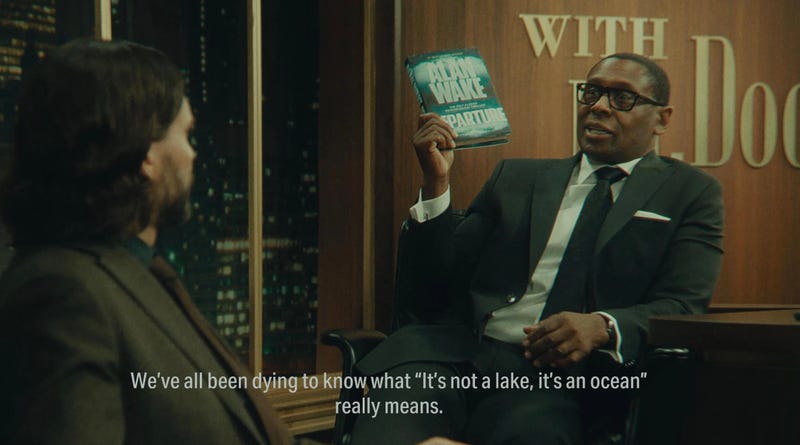
Until very recently, I’d thought that Alan Wake 2 would reside in the #2 slot here, while Tears of the Kingdom would remain my personal game of the year. However, a chance encounter recently with writer Cole Kronman (who wrote this great piece on Xenogears and the games of Tetsuya Takahashi for us) helped me clarify my own feelings. I realized that for me, these two games are in close conversation with each other, strange mirrors of each other’s greatness, and that together, they define the best that 2023’s games had to offer in my mind. I’m not going to spoil plot points for either game, but to engage with why and how this is the case, I need to mention a crucial line of dialogue from the end of Alan Wake 2, one that mirrors the first game’s climactic mic drop of “It’s not a lake, it’s an ocean.” If you haven’t yet finished Alan Wake 2 and want to discover this line for yourself, turn back now.

In the final moments of Alan Wake 2 (and potentially earlier, depending on how thorough you are in exploring and absorbing Remedy’s metaphysical horror odyssey), a character says, “It’s not a loop, it’s a spiral.” Alan Wake 2 explores the difficulty and anguish many artists find in the creative process, the way it can sometimes feel like you’re just banging your head against the wall and not making a damn bit of progress, seeing no way out whatsoever as that blank page continues to taunt you.
Read More: Alan Wake 2: The Kotaku Review
And yet, sometimes at least, a way out does eventually reveal itself. Sometimes, after we’ve been spinning our wheels for what feels like forever, something in our subconscious will finally crack, a bit of light will shine through, and we will see, at long last, a path forward, knowing that we had to go through all of that internal turmoil to find our way out. What felt like a pointless, exhausting, excruciating loop was in fact a spiral all along. Before spotlighting this at the end by having a character speak the line, Alan Wake 2 hides this idea in plain sight, repeatedly putting you in environments that feel like loops that you have no choice but to run through again and again. Eventually, your persistence pays off, something suddenly changes, and a way out reveals itself. You thought you were going in circles but you were actually moving forward all along; it just took a lot of energy and grit to see that.
I don’t have any particular insight into what the struggle to get Alan Wake 2 made was like for creative director Sam Lake and the other folks at Remedy, but it’s no secret that this is a game the studio had been hoping to make for a very long time. I have to imagine that at times, the setbacks and struggles were crushing, that they felt like defeat. And yet, it’s undeniable that if Remedy had been able to make a sequel to 2010’s Alan Wake some 10 or six years ago, it would not be the game that it is today. Alan Wake 2 is extraordinary in no small part because it is a game that took 13 years to get made, and because, in its creative energy, you can feel the restless struggle, the accumulation of ideas, the desperate search for a way out. Alan Wake 2 is about many things, but perhaps none of them is more crucial to its identity than being about the struggle to make Alan Wake 2.
(continued on next page)
1. Alan Wake 2 and The Legend of Zelda: Tears of the Kingdom (tie) (continued)
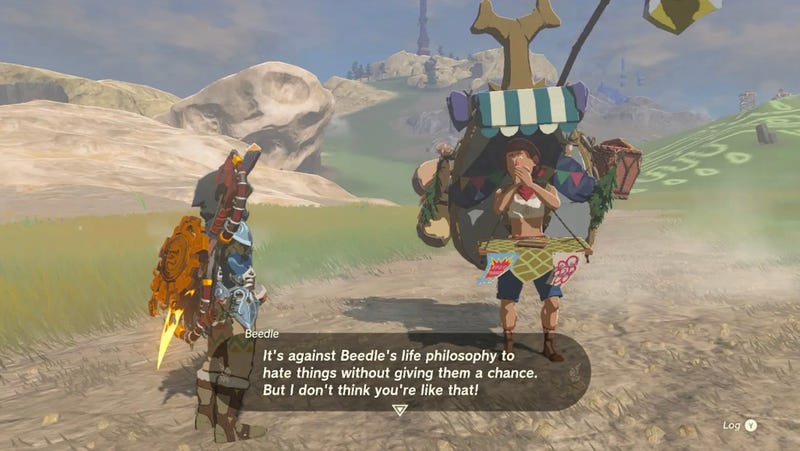
The Alan Wake games may have avoided ever getting trapped in a creative loop, but if ever a beloved game series exemplified just how easy it is for a franchise to start spinning its wheels and seemingly going nowhere, it’s The Legend of Zelda. There’s no better piece on this than critic Tevis Thompson’s urgent 2012 essay Saving Zelda, which details, in the wake of Skyward Sword, how the crushing sameness of so many entries in the series had started squeezing all the life out of it, sapping it entirely of the spirit of exploration and adventure that it had once embodied.
Read More: The Legend Of Zelda: Tears Of The Kingdom: The Kotaku Review
But finally, the loop that had begun to feel so hopelessly limiting and restrictive in games like Twilight Princess and Skyward Sword gave way with 2017’s Breath of the Wild, a game as grand and liberating as we could have hoped for. And perhaps, like Alan in the Dark Place struggling again and again to write himself a way out, all of that repetition and sameness had been in some way necessary for Nintendo to arrive at a place where it could break free. But now there was a danger that, with Tears of the Kingdom, a new loop would begin to set in, a new era of modest tweaks and re-skins of the same basic design principles.
Nintendo avoided this, however, by examining the core relationship in Breath of the Wild–the one between Link and the land of Hyrule itself–and giving you a wonderful new assortment of ways to explore that connection. Like Alan Wake at his plot board, experimenting with new ideas until he finds the ones that really click, one gets the sense that TotK’s designers tried plugging in all kinds of fresh ideas until they hit on those that created the greatest opportunity for creativity and wonder. Abilities like ultrahand and ascend encourage you to see Hyrule with fresh eyes, as a place full of new possibilities.
Tears of the Kingdom also gives you a world that feels so alive and responsive to your presence that new themes and meanings emerge naturally from the act of play. In the Los Angeles Review of Books, for instance, Martin Dolan argues, “Behind its thin facade of a PG-rated fantasy adventure, the world of Tears of the Kingdom is a parable of climate change in action.” I felt that too. The Hyrule of Tears of the Kingdom reminded me of what it is to feel deeply connected to the world around me, to feel caught up in the interwoven web of life. In its own very different way from Alan Wake 2, it’s a remarkable artistic triumph, one that perhaps could not have existed if years hadn’t been spent struggling to find an invigorating new creative direction to go in.
I wish real creativity were easier. I wish it really were just a matter of getting a flash of inspiration and seeing your ideas spill out onto the page. And I suppose once in a while it is. More often than not, however, it’s labor, grueling and arduous, which, if you’re diligent and lucky, might at long last produce something great, and it’s all the more rare in games because the industry often prioritizes the safe and reliable over the genuinely creative and visionary. I hope that Alan Wake 2, Tears of the Kingdom, and this year’s other big swings can light the way toward an industry that gives us more bold, daring games like these in the years to come.
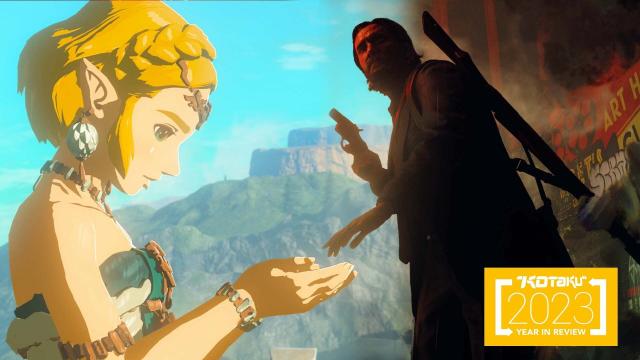
Leave a Reply